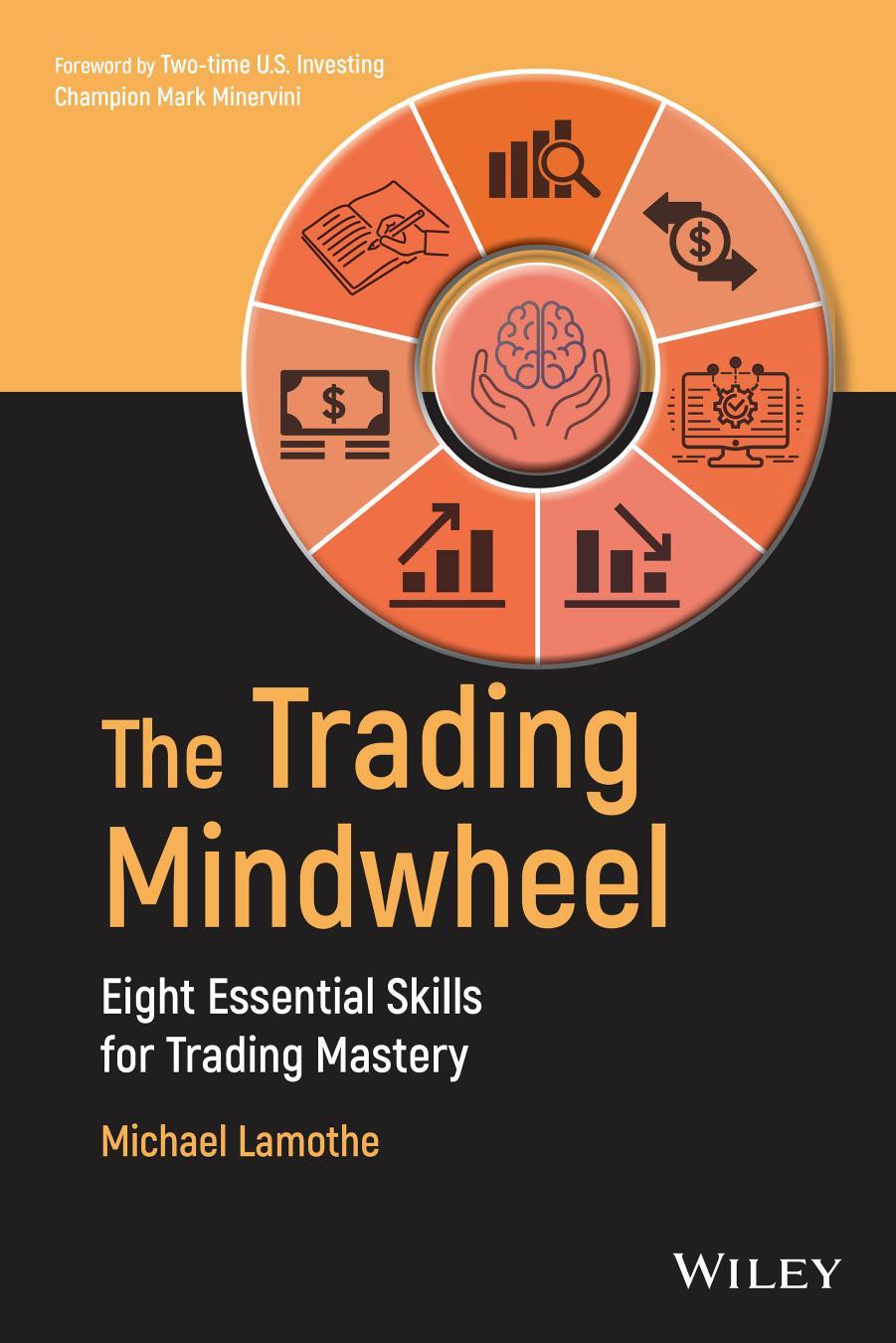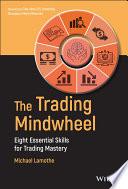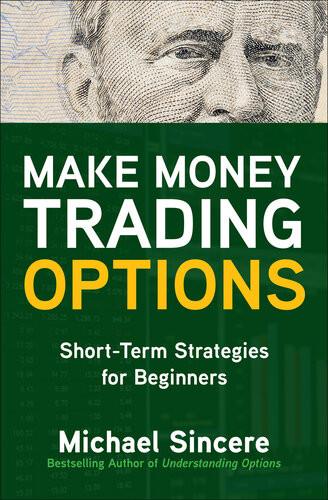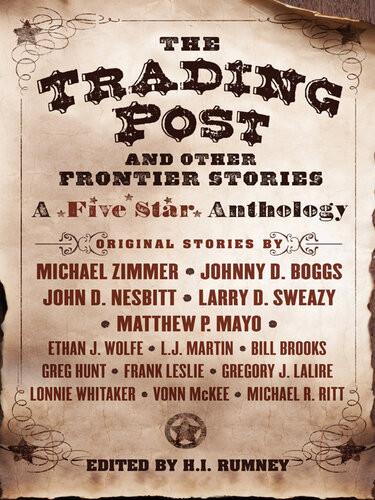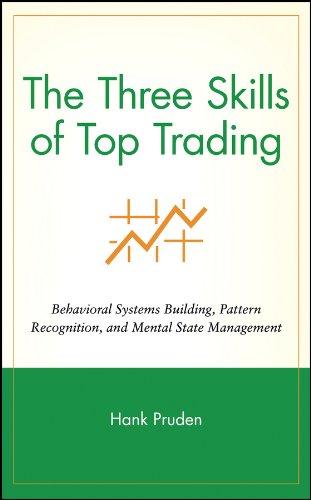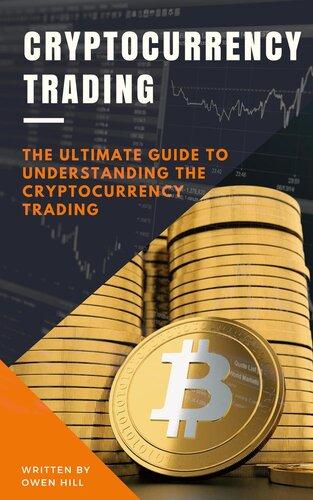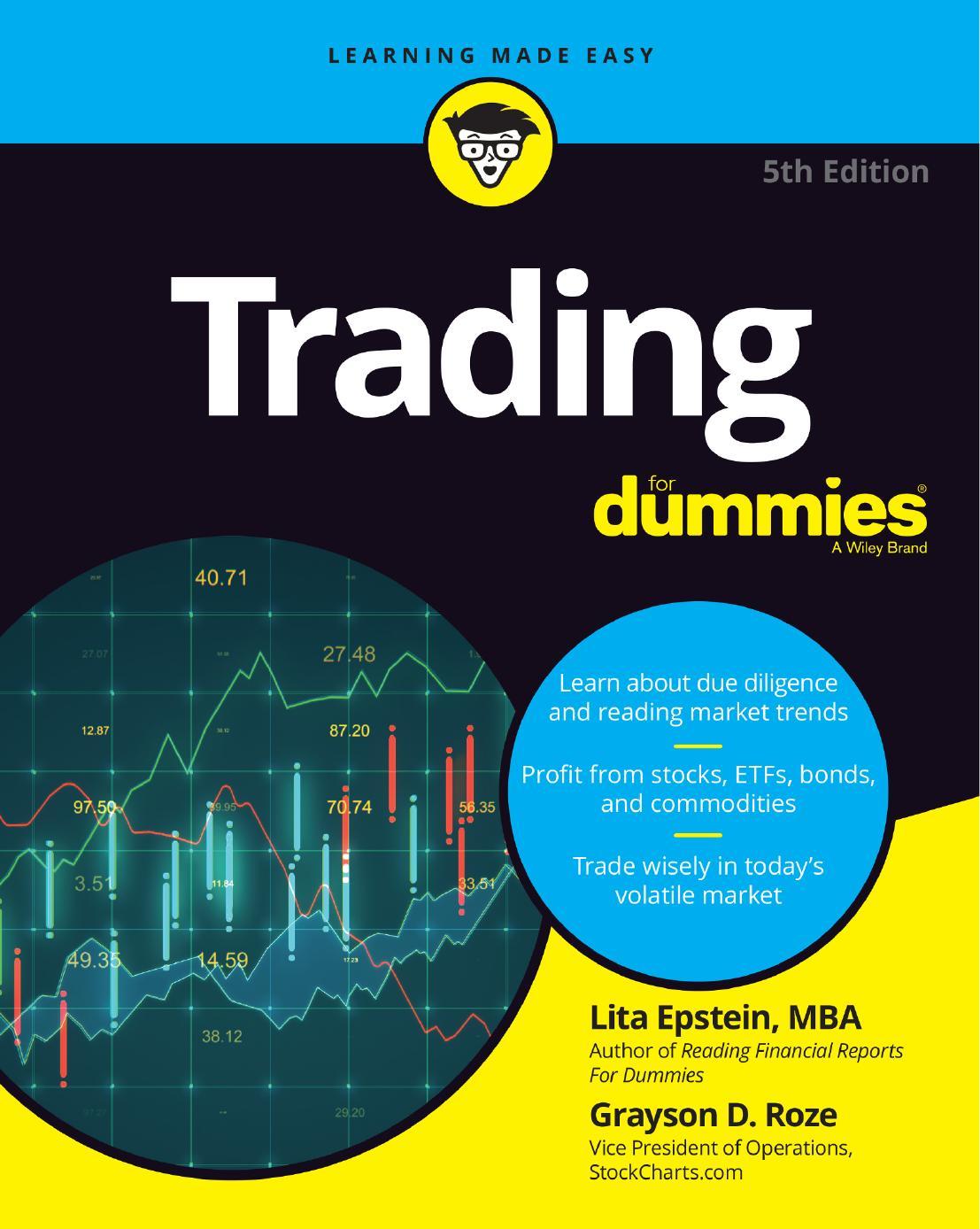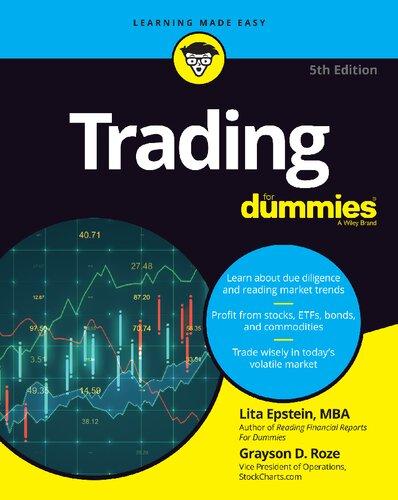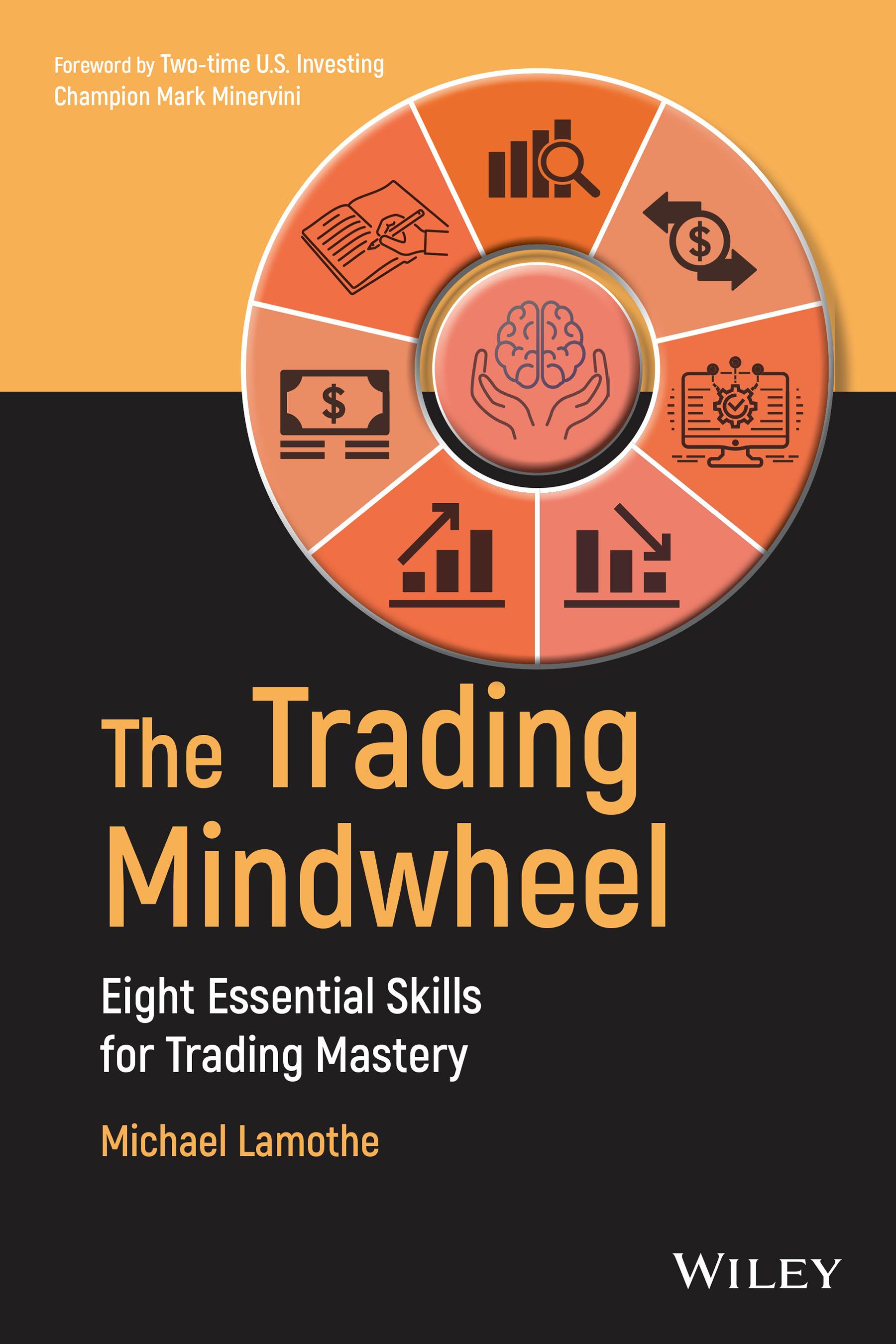Michael Lamothe
Visit to download the full and correct content document: https://ebookmass.com/product/the-trading-mindwheel-eight-essential-skills-for-tradin g-mastery-1st-edition-michael-lamothe/
More products digital (pdf, epub, mobi) instant download maybe you interests ...
The Trading Mindwheel - Eight essential skills for trading mastery 1st Edition Michael Lamothe
https://ebookmass.com/product/the-trading-mindwheel-eightessential-skills-for-trading-mastery-1st-edition-michael-lamothe/
The Trading Mindwheel Michael Lamothe
https://ebookmass.com/product/the-trading-mindwheel-michaellamothe/
Make Money Trading Options 1st Edition Michael Sincere
https://ebookmass.com/product/make-money-trading-options-1stedition-michael-sincere/
The Trading Post and Other Frontier Stories Michael Zimmer
https://ebookmass.com/product/the-trading-post-and-otherfrontier-stories-michael-zimmer/
The Three Skills of Top Trading: Behavioral Systems Building, Pattern Recognition, and Mental State Management (Wiley Trading Book 291)
https://ebookmass.com/product/the-three-skills-of-top-tradingbehavioral-systems-building-pattern-recognition-and-mental-statemanagement-wiley-trading-book-291/
Quantitative Trading: How to Build Your Own Algorithmic Trading Business (Wiley Trading) 2nd Edition Chan
https://ebookmass.com/product/quantitative-trading-how-to-buildyour-own-algorithmic-trading-business-wiley-trading-2nd-editionchan/
Cryptocurrency Trading: The Ultimate Guide to Understanding the Cryptocurrency Trading Owen Hill
https://ebookmass.com/product/cryptocurrency-trading-theultimate-guide-to-understanding-the-cryptocurrency-trading-owenhill/
Trading For Dummies 5th Edition Lita Epstein
https://ebookmass.com/product/trading-for-dummies-5th-editionlita-epstein-2/
Trading For Dummies, 5th Edition Lita Epstein
https://ebookmass.com/product/trading-for-dummies-5th-editionlita-epstein/
Praise for The Trading Mindwheel
“Excellent! The Trading Mindwheel is packed with many practical steps needed to become a more successful trader. It’s perfect for anyone who’s read Reminiscences of a Stock Operator (Lefevre/Livermore) and William O’Neil’s book (How to Make Money in Stocks) and is ready for more specifics. If you are serious about speeding up your learning curve, this is a great addition to your trading library.”
—Mike Webster, Prior: IBD-Head Market Strategist, O”Neil Capital Mgmt-SVP/PM Ideas. Current Portfolio Manager for a private fund
“Mike explains trading psychology in a way that every trader can not only grasp but instantly apply to their trading. The tips and techniques that Mike shares are not going to be found in some random online blog; Mike has such a unique way of explaining things that you’re sure to find value in every sentence. Mike has been around long enough to know what works and what doesn’t work, and he conveys that incredibly well.”
—Austin
Silver, Founder ASFX.biz
“In his book, The Trading Mindwheel, Michael emphasizes the vital role mindset plays in a trader’s ability to profitably execute a sound trading strategy. Top-performing traders know that achieving trading mastery first requires overcoming mental barriers.”
—Leif Soreide, 2019 US Investing Champion and Founder of Champion Team Trading
“Michael Lamothe is the real deal. He is living proof that dreams do come true on Wall Street. He quit his nine-to-five and now makes a full-time living from the stock market. Michael knows what it takes to be successful on and off Wall Street. Michael does a great job of simplifying complicated topics that most people do not talk about when it comes to investing and trading
stocks. The proper mindset required to be successful on Wall Street is arguably the most important element that separates the smart money from everyone else. Traders at nearly all levels can benefit from Michael’s work. I recommend Michael to just about anyone looking to get ahead! Keep up the great work!”
—Adam Sarhan, Author of Psychological Analysis, Host
of The Smart Money Show Podcast, Forbes Contributor, and Founder FindLeadingStocks.com
“The Trading Mindwheel covers important concepts that all traders should know and implement in their trading. It’s an excellent resource for new and experienced traders alike!”
—Rizwan Memon, Founder and President Riz International
“As a longtime buy-and-hold investor, I found this book to be a fascinating, informative, must-read for anyone interested in trading. As any trader knows, there is an emotional rollercoaster, and daily trials that need to be overcome, and Mike has successfully created an easy-to-follow guide that not only helps you develop the mindsets needed for success but also that will shave years off your learning curve.”
—Bob Lotich, Best-selling author
of Simple Money, Rich Life
“The biggest misconception new traders have when learning how to trade is that their technical or fundamental strategy will be all they need to become a successful trader, but without the proper mindset, they will never find success as a trader. The Trading Mindwheel lays out eight essential skills that will be worth more to a trader than any technical or fundamental strategy they will learn.”
—Anthony Crudele, Futures Trader, Host of Futures Radio Show Podcast.
“Having been a trader and investor myself for many years and experienced many different market conditions, I fully accept that the ability to remain consistent and focused is essential. I have also realized that, at times, you can feel isolated and lonely. In the world of the Internet today, there is a sea of information, much of which is counterproductive to traders and investors. Quality resources are sparse. Even most successful traders keep their cards
close to their chests. I want to thank Mike for writing this book because this is what traders and investors need. The quality of this book is the standard of tool that actually provides traders and investors with an edge. A must-read for anyone serious about making a success of trading.”
—Jason Graystone, Trader and Investor, Cofounder of Tier One Trading, Host of Always Free Podcast
“Mike’s book is a breath of fresh air in an otherwise suffocating world of trading education. No bells, whistles, or promises, simply an inside look at what it really takes to be a consistently profitable trader. Most books spend far too much time teaching “secret methods” or “magic strategies” that promise to bring results. This one takes a no-fluff approach and focuses on the key categories that need to be addressed if a trader wants to become and more importantly, remain successful.”
—Akil Stokes,
Cofounder
of Tier One Trading, Host of The Trading Coach Podcast
“Michael goes deep on techniques, tactics, and self-analysis. In these areas, Michael guides us on how to use proven investing techniques and how to honestly do a good self-assessment on how to use the techniques and how to improve your approach with the techniques! Our best friend and our worst enemy greets us in the mirror each morning. The foundations given in Michael’s book will help you realize your strengths, your weaknesses, and how to be the best investor you can be.”
—Patrick Walker, IBD Meetup Leader, Founder of Mission Winners
Introduction
PRELUDE
Hi, this is Mike Lamothe. Thank you for taking the time to read The Trading Mindwheel. I hope you enjoy reading it as much as I enjoyed writing it. The process has been truly transformative for me.
The purpose of this book is not only to provide you with the basic framework for successful trading, the skills involved, and what it really takes, but also to show you how personal mindsets, psychology, and beliefs are interwoven into all aspects of trading. To drive this point home, I’ve decided to share with you some of my personal story—triumphs, failures, misfortunes, personal pain and suffering, and what it finally took to overcome those challenges and reach success.
What I’ve learned through the years is that at just about any juncture, things could have gone completely off the rails. Sometimes they did! However, unlike the movies, as long as we still have breath in our bodies, there isn’t some absolute point of no return. There’s ALWAYS a way for us to get back up, dust ourselves off, hit the refresh button, and carry on.
Enjoy the journey.
THE START OF SOMETHING LIFE CHANGING
It was June of 2018. We were gathered to celebrate my dad’s 70th birthday. A small gathering of close family and friends at my dad’s favorite restaurant in Port Jefferson, New York, the Lobster House. After we ordered some appetizers and a round of drinks, with my three-year-old daughter, Lily, squirming in my arms, I held up a beer from a local brewery, took a deep breath, and stood up to say the following words:
Even now this is challenging to say . . . Dad, more than 30 years ago you rescued me from what could have turned out to be a really, really terrible life. You are my hero.
A few years ago I read this book called Your One Word by Evan Carmichael. The idea he had was that there’s one word that acts as your guiding light. Your north star, so to speak, and I discovered that my one word was “Inspire.” There were a few exercises in the book that led me to pick “Inspire,” but until recently I didn’t fully understand why. I’ve now come to realize that it came from you!
A big part of this “one word” concept was developing a credo. Three other words help you define your one word. I chose “Believe,” “Perseverance,” and “Love.” Again, I was doing the exercises but not fully comprehending what led me to select those three words. And then, it dawned on me. . . .
Throughout my life, Dad, you’ve always believed in me even when I didn’t believe in you or in myself. When you and Mom divorced all those years ago and I came to live with you, it was hard. I was told many negative things about you, and back then I believed them all. I struggled with those negative beliefs for the first ten years we lived together. Perhaps you were able to tell I was struggling by my words and my actions. But despite all that, you never stopped trying, and you never stopped believing in me. For a decade you persevered to be the best dad you could be, not knowing if I would ever realize how hard you were working or even show you an ounce of love in return. You showed me so much love for so long that I just had to tell you this—you’re my hero, and you’re the person who has made me want to inspire others. And I know I don’t tell you this enough, but I love you.
Less than a year later my father died of a sudden heart attack. As much as it pained me to lose him, I was at peace because I had told him what I needed to say. I was filled with so much gratitude that I got to say what I wanted to say to him before he passed. So grateful that I didn’t leave those words on the table. What I said in that speech I would never have said if I hadn’t put in the work to understand my beliefs, where they came from, to shift my perspective, and to view what was once anger, guilt, and sadness from a traumatic childhood to now be important teachers. To understand that where we start out doesn’t have to be where we finish. To understand that we have the capacity to begin these shifts in a heartbeat. The most important things between us were said. He knew how I felt. He knew everything he struggled through meant something. And even as I sit
here and type this it brings a tear to my eyes . . . and that’s the thing—that’s the important thing. Life and all of its experiences can serve us if we allow them to. It may not seem like it in the moment, but even the harshest, most painful things in life can serve us. It’s crazy how small actions such as reading a book and doing the suggested exercises can lead to results far greater than we could ever dream of.
You may be saying to yourself, “That’s an incredible story, but what does this have to do with trading?” Well, I’m glad you asked because the answer is EVERYTHING. It has everything to do with trading!
I decided to write The Trading Mindwheel because it is our beliefs that can either help us or hinder us with whatever it is that we wish for. Be it the ability to openly express our feelings, overcome childhood trauma, build a fortune, live a happy and fulfilled life, or simply trade better. I find it helpful to think of beliefs as you might an operating system in a computer.
Imagine, if you will, that you are getting ready to place a trade. You sit down at your computer, turn it on, and wait for it to boot. It takes a few minutes. but this is okay and totally normal to you. You’re used to it. After all, this machine has served you well for the last 20 years, and as they say, “If it ain’t broke, don’t fix it,” right? It’s been trusty, reliable, and comfortable, and you’re used to it.
Sounds ridiculous, right? Who is still using the same computer from 20 years ago? But what if I told you that this is what most of us do with our belief systems? We continue to run the same old programming from 20 years ago. Perhaps it’s time we take a look around and consider an upgrade!
This book is designed to help you discover and install many of the upgrades needed for successful trading. It will help you question and challenge the status quo. It will introduce you to the building blocks needed to lay the foundation for your successful trading future. We all need upgrades from time to time, myself included. The sooner we can admit that to ourselves, the sooner we can begin the process. If we’re truly honest with ourselves about where we’re at, it makes figuring out the path of how to get to where we want to go a lot easier.
Throughout this book, you will encounter many exercises. Just like my first book, The MARA Mindshift Guide: A Trading Beliefs Workbook, if you want to get the most out of this book, you must do the exercises. Skim through this book, and you’ll still get value, but you’ll be leaving a lot on the table. Some simple coffee table wisdom my dad used to give me all the time was, “Always do your best.” Has anyone ever told you that? It’s simple advice, but how often do we find ourselves doing less than our best? Here’s another
question, How often do we find ourselves attempting to do more than our best? I don’t know about you, but I’ve found myself on either side of that coin multiple times in my life. Funny enough, I’ve found it to be like a balancing act and one often leading to the other. Doing less than we’re capable of and then scrambling to make up for the lost time, being gung ho for something new and exciting, rushing in without much of a plan or the wrong expectations, attempting to take on everything at once, and quickly becoming overwhelmed. Have you felt this way?
To stay on track, perform at our best, and achieve the results we’re after, I find it best to:
1. Develop clear goals;
2. Develop plans to meet those goals; and
3. Focus doggedly on consistent execution of those plans toward those goals.
We’ll discuss each of these—goal setting, plan development, and execution—in detail in later chapters. For now, think of goals as you would think of putting an address into a GPS. The more specific we are, the easier it will be for us to get from where we are to where we want to go. With clear goals, even when life puts up roadblocks and we get knocked off track, we can still find our way over, around, or through to get back on track.
You may find some of the exercises in this book to be easy, some of them hard, some of them quick, and some may take a while. All of that is okay. All of that is part of the journey. What I promise you is that it will all be worth it, and your efforts will be well rewarded in ways you may never have imagined.
In this book, we’re going to leave no stone left unturned. I’m going to share with you everything that has led to my personal success and the success of the thousands of traders I’ve coached and mentored through the years. I’m going to share with you the ongoing efforts, strategies, and tactics we use for continuous improvement.
Maintaining success that lasts takes a certain level of tenacity and perseverance. I believe that we’re all capable of this. That we all have it within us. And even if you’re reading this and you’re at a point where you’re questioning if that fire within you has gone out, I’m here to let you know that it can always be rekindled, relit, stoked—and it can grow!
While this book shares much of my story, this book really isn’t about me. It’s about you. It’s about your journey. It’s about the things that will help you achieve the levels of trading success that you are after and beyond.
The stories in this book are meant to inspire, offer a fresh perspective, help you avoid errors and traps. Learn not only what really works but why it works. At the time of this writing, I have traded for over 20 years. My first account was opened in the summer of 1999. Since then I have made more mistakes than I thought existed. I’ve suffered several blown accounts. I even swore that I’d give up trading entirely, twice and nearly did! In fact, if we could go back in time and talk to my younger self, I’m sure he’d fall on the floor when we tell him that not only did we finally make it, but here we are writing a book and helping others achieve their dreams.
Yes, my friend, where we start out does not need to be where we finish. We all begin life as tiny specks that rapidly grow. That growth does not need to end after adolescence. It does, however, change from being something that happens automatically to becoming a choice.
We can choose to continue growing—growing our knowledge, health and well-being, wealth, wisdom, and influence, or we can choose not to. It’s an individual choice, and there is no right or wrong answer. However, the question I often find myself asking is, Why not? Why not continue growing and becoming all that we can? We’re only here for a short while after all. When we near the end of our lives, would we be satisfied with ourselves if we’re unable to positively answer the question, Did I do my best?
Now before we continue, let’s come up with some definitions of success and failure. Think of it as your first exercise in this book. So go ahead, put down the book, and grab some paper and something to write with.
Are you ready? Okay, great.
First, take a moment and think about the ways in which you define success. Write them down. You may already have a few ways that you’ve been defining success, and that’s okay. Write whatever comes to mind about success. Ready? Go!
After you’ve written down what success means to you, answer the following questions.
• Does it have to do with achievement?
• Does it have to do with the process?
• Does it have to do with the outcomes?
• Is it something large?
• Is it grandiose?
• Is it something small?
It really helps to get these ideas out on paper. Trust me on this one. I used to be the person who would read a statement like that and think, “Yeah, sure,”
answer the questions in my head for a brief moment, and move right along. My results in trading, health, physical performance, family, and life, in general, all improved substantially and shockingly fast when I began writing. So if you haven’t done so already, give it a shot! What do you have to lose? If you don’t have paper and something to write with, type on your phone, tablet, or computer. If you can’t write them now, do so as soon as you’re able. You’ll get infinitely more from it this way, I promise you.
Now that you’ve successfully done that, think of the ways in which you define failure. Write them down.
• What comes to mind when you think of failure?
• Is it outcome-based?
• What emotions do you associate with failure?
If your answers have something to do with achievement or outcomes, you’re not alone. Most people look at success like this: “If I do _____ and achieve _____ outcome, then I was successful at _____. However, if I do _____ and do not achieve _____ outcome, then I was not successful at _____.” While this may be straightforward and sound completely logical, there are some major flaws with this view of success when it comes to trading.
Simon Sinek, speaker, and best-selling author of Start With Why, shares that the problem with defining success based on outcomes is that it’s too shortsighted. For example, if we go to the gym and afterward look at ourselves in the mirror, we won’t see any results. Do this again a few days in a row, and we’ll conclude that it doesn’t work because we don’t see any results. However, we know that through consistent effort we will achieve success, even though we may not know the exact day that happens.
Trading is a game of probabilities. Many of the best traders in the world such as recent US Investing Champions Mark Minervini, Oliver Kell, and Leif Soreide, each with annual returns well into the triple digits, have win rates near 50%!
In trading, if we were to judge success based solely on the outcomes of individual trades, we may have taken a snapshot of these champions at some point in time and considered them failures! It’s the wrong perspective! I mean, most of us would be quite satisfied with triple-digit annual returns. Wouldn’t you?
I think we can come up with a better definition of success. However, before we do, let’s dispel the individual outcome definition further. Here’s a question to help. Where does defining success based on individual outcomes tend to lead?
More often than not, those who experience “system hopping,” the act of jumping from system to system or frequently changing trading styles or rules, define success and failure based on the results of individual trades and/or small, non–statistically significant groups of trades.
For example, suppose you learned a trading system and after 30 trades you were sitting at a net loss. Would it be time to switch systems or styles completely? Maybe, but maybe not! In most cases, to achieve a level of statistical significance where we can spot a true pattern versus random chance, we’d want to see at least 100 trades.
If the thought of trading a system 100 times to find out whether it works or not scares you, do not worry. When we get to the chapter on testing, we’ll discuss how you can find reliable results faster with little to no additional money out of pocket required.
Back to our definition of success: If we’re not defining our success based on outcomes alone, what should we define our success on? I suggest part of our definition be based on our level of progress, effort, and following the process.
Here’s a quick story to help illustrate the point.
The Parable of the Sower and the Seed
Behold, a sower went out to sow. And as he sowed, some seed fell by the wayside; and the birds came and devoured them. Some fell on stony places, where they did not have much earth; they immediately sprang up because they had no depth of earth. But when the sun was up they were scorched, and because they had no root they withered away. And some fell among thorns, and the thorns sprang up and choked them. But others fell on good ground and yielded a crop, some a hundredfold, some sixty, some thirty.
You may look at this parable and conclude that the moral of the story is that our job as the sower is to simply sow, keep on sowing no matter what, and eventually good things will happen. This may be part of the answer, but it certainly isn’t all of it. It took me nearly a decade of trying this out with the market to realize this.
While consistent effort is a major part of success and we should acknowledge it, it isn’t everything. For example, the sower must have had at least some basic knowledge of how to sow, right? At least enough to not dump all of the seeds in a pile in the middle of the field and walk away. Certainly enough to not overanalyze each spot where he or she was going to sow, lest not enough seed would get sowed and there wouldn’t be enough crops! And perhaps the sower knew enough to follow the process of sowing and allow the systems of nature and numbers to take over. Couldn’t something similar be said about trading?
Here’s a question worth asking: Could the sower’s sowing be improved? Absolutely! The sower could get a better bag so that less seed fell by the wayside. He could have better knowledge of where the good soil is and how to avoid the stony or thorny places. Yes, the sower’s skills can be improved, and our trading skills can be improved, too. In order to do so, we need to focus on the process first. Focus on the basics first and more advanced skills later. Have faith that following the process will yield the results we’re after. If we work to improve our skills, we can grow, come back, grow some more, and become the best we’re capable of being.
So what are the essential skills required for trading? What are the skills that will really help us roll faster down the path of trading success? I’m glad you asked. Allow me to introduce you to “The Trading Mindwheel.”
PHILOSOPHY OF THE TRADING MINDWHEEL
What is the trading “mindwheel”?
Think of it like this. Picture a bicycle. Think of one that you’d consider reliable and would trust to ride on a warm summer’s day through the park for a good time. What condition is this bike in? Picture the wheels. What do they look like? How about the tires? Are they new? Fully inflated? Of course they are, right? The bicycle you just pictured is the type of bicycle we’re going to create for your trading with the trading mindwheel.
Each of the skills needed to trade successfully is a spoke on the wheel. At the center of the wheel, the axle, are our beliefs. Our beliefs hold everything else together. In fact, let’s think about it for a moment. What are some of the most negative beliefs you’ve heard about trading? Perhaps you’ve heard that the markets are rigged and that unless you have scores of analysts working for you around the clock, you really don’t stand a chance at being successful. Could you imagine someone rolling down the path of trading success with beliefs like that? Of course not, right?
If any of that sounds like you, don’t worry. I have some good news for you. Because we have the freedom of choice, we can choose which beliefs we hold, which we adopt, and which we let go of. In later chapters, we’ll discuss how to do this. Unfortunately, when it comes to trading, most of us just hop on the bike and start pedaling. Some of us may even expect the trading equivalent of winning the Tour de France within our first few times out. This usually doesn’t work out too well.
More often than not, what happens when we approach trading this way is we either fail right out of the gate, or, worse, we have a big winning trade that inflates our ego!
As time goes by we realize trading is far more challenging than we had initially thought. We do not come close to our idea of “winning.” Instead, we struggle fall, skin our knees, and likely crash into a bush.
It’s at this point that we start to wonder about what went wrong. The earlier thoughts of the market being rigged and us needing scores of analysts in order to win start to creep back in. Meanwhile, we totally forgot that not only did we not inspect the bike before we hopped on, but we also failed to notice that it was rusted, had a set of square wheels, and half-inflated tires. If we’re being totally honest with ourselves, was it really the “market’s fault” that we struggled, fell, and skinned our knees?
We’ve all blamed someone or something else at some point in our lives. But what has that really gotten us? If we’re honest with ourselves, maybe it felt good to offload that blame in the moment. But where have pointing fingers, passing the buck, and playing the blame game really gotten us in the end?
Playing the blame game in the past does not preclude us from success in the future. However, if we want positive change, the blame game needs to end now. That is, of course, presuming that you want to ride down the path of success. If you do, a rusted bike with square wheels won’t get the job done.
So what exactly is the “Trading Mindwheel,” and what are the skills needed to trade successfully?
I’ve boiled it down to eight essential trading skills that are requirements for success. If any of the eight is missing or underdeveloped, adding or improving in these areas will be your quickest path to success. I’ve drawn these conclusions after more than 20 years of experience and research. This includes both primary research consisting of my own hypotheses, testing, trial and error, and results, as well as secondary research including studying some of the best traders, investors, coaches, and psychologists living and deceased. These titans include, but are not limited to, William O’Neil, Nicolas Darvas, Jesse Livermore, Stan Weinstein, Van Tharp, Mark Minervini, David Ryan, Ed Seykota, Ray Dalio, Mark Douglas, Alexander Elder, Brett
Steenbarger, Jim Roppel, and Tony Robbins. It’s great to have aspirational mentors. I’m extremely blessed to have not only worked with a few of the aforementioned people but to have become friends with them.
The Eight Essential Skills Needed for Successful Trading Include:
1. MINDSET: Beliefs, Belief Systems, Emotions, and Habits;
2. JOURNALING: Step One of Accountability and Continuous Improvement;
3. ANALYSIS: Analyzing Trades and Markets;
4. RISK: Initial Capital Risk, Position Sizing, Potential Reward;
5. TRADE MANAGEMENT: Managing Risk throughout the life of the trade;
6. PORTFOLIO MANAGEMENT: The BIG Picture and Assessing Our Total Risk;
7. POST ANALYSIS: Step Two of Continuous Improvement;
8. TESTING: Factor Modeling, Back Testing, and Forward-Testing.
Here’s a little prelude of each part of the mindwheel before we get into the heart of each in greater detail within this book.
MINDSET: Beliefs, Belief Systems, Emotions, and Habits
Mindset covers more than you might think. For the sake of this book, mindset includes our beliefs, belief systems, emotions, habits, and general market psychology. So while it does have its own set of chapters, the mindset theme will be recurring throughout the entire book.
Mindset is at the center of the mindwheel and for good reason. We have beliefs about everything. Over time these beliefs become interconnected and can form systems. The belief systems form the stories we tell ourselves. These stories guide our actions for better or worse. So if you ever hear the term “BS,” it may just be referring to a Belief System.
The truth is that all of our BS for better or worse, has served us at some point in our lives. What happens, however, is that most of us don’t revisit our old BS. We just shovel new BS on top of the old. What we end up with is a confusing stinky pile where things don’t grow so well.
All kidding aside, the first steps we’ll take together will be revisiting our old belief systems and seeing what’s there. We will question how these belief systems served us in the past. We’ll figure out what our goals are now. And
then we’ll ask ourselves if our current set of beliefs are leading us closer to, or further from, our goals. We’ll reconcile them and install new, upgraded beliefs that will allow us to grow into our goals.
JOURNALING: Step One of Accountability and Continuous Improvement
It’s often said that the market is the best teacher. Well, if we believe this to be true, then we better take good notes! In fact, one of the most common factors I’ve observed among traders who succeed versus the ones that don’t is journaling!
To their detriment, I’ve seen many new and aspiring traders brush journaling aside, considering it a chore at best or a waste of time at worst. They’ll “try” journaling, often giving it a half-hearted effort. Often they will then repeat the same mistakes again and again for months or even years while being completely oblivious to the reasons why.
Peter Drucker, the famous business consultant, famously said, “What gets measured, gets managed.” There’s a lot of truth in that. Journaling is an important first step in the measurement process. After all, we can’t measure nor can we manage what we don’t have, can we?
We’ll discuss the types of data, thoughts, and emotions we’ll want to capture in our journals. We’ll even discuss the various types of journals that exist, the specific data points we should strongly consider capturing, as well as the strategies and tactics involving when and how to capture them, and of course the reasons why. But for now, please understand that the most important thing with journaling is that we simply get started. Yes, this means that in the beginning, it will likely be a little messy, perhaps a tad unorganized, and we may even have to deal with a bit of uncertainty about whether we’re overdoing it or underdoing it. Rest assured that all of that is okay and is actually a part of the process. Our journals will evolve with us. The only way this evolution begins is to get started.
Again, it’s easy to get bogged down in the details, feel overwhelmed, and put it off. This is why the emphasis is on getting started and keeping the momentum going (and we’ll discuss tactics for keeping the momentum going too).
ANALYSIS: Analyzing Trades and Markets
When we think of analysis, many things may come to mind. We can analyze individual trades and investments. We can go broader and analyze markets
and global macro events. If you’ve ever read Jack Schwager’s Market Wizards book series (if you haven’t, then I highly recommend it), you already know that there are all sorts of successful methods of analyzing markets and trades. For the purposes of this book, we’ll discuss the various types of analysis I’ve tried, the pitfalls, the successes, and perhaps most importantly, the whys behind them all.
RISK: Initial Capital Risk, Position Sizing, Potential Reward
There are lots of ways to think about risk. For the purposes of this book, we’ll be focused on risk as it directly affects our accounts. I’m talking about the capital at risk if we lose on a trade or investment, the size of the position we’ll be taking on relative to our account size, as well as the potential rewards we hope to receive in relation to the risk we’re taking on. We’ll break down some relatively simple ways to understand and calculate risk and provide you with some free tools to help you calculate it quickly.
TRADE MANAGEMENT: Managing Risk throughout the Life of the Trade
Once a trade or investment is executed, its management begins. We’ll want to lay the groundwork for our trade management well in advance. A few of the questions we’ll ask ourselves include: What rules will we follow? What types of signals will we look for to add or reduce? When will we look for these signals? Daily? Weekly? Longer or shorter?
While trades and investments are indeed managed in real time, it does not mean that we should fly by the seat of our pants. In fact, many of the fears you’ve likely heard of and perhaps experienced, such as fear of loss or fear of being wrong, are commonly linked to a lack of preparation and a rock-solid plan.
We’ll discuss various management techniques, from active to passive and everything in between, from what’s worked best for me, for my clients, and why, and how it can evolve over time.
PORTFOLIO MANAGEMENT: The BIG Picture and Assessing Our Total Risk
Managing individual trades and investments is important. However, to roll down the path of trading success, we must think bigger. We must consider how we’ll manage trades in relation to one another, to changing
market conditions, and to the larger whole of the various asset classes we may own.
To go back to our sower example from earlier, we must determine which seeds we’ll plant where and how much, how we’ll space them out, during which periods we’ll plant, and what happens if we get more or fewer crops than expected. In a nutshell, that is portfolio management.
Another idea that we’re after here is balance. Balance comes in a variety of flavors. Some things we’ll consider are how our portfolio is weighted in terms of groups and sectors, how it’s weighted among asset classes, and how much total risk we’re taking on at any given time. For example, when the market is hot and everything seems to be working in our favor, it’s quite possible to get heavy (putting on several trades at once) in a hurry. Knowing our total risk becomes even more important. The market may be hot, but we don’t want to get burned. If the market has a sudden move against us, awareness of and managing our total risk saves us from getting scorched.
POST ANALYSIS: Step Two of Continuous Improvement
A simple way we can begin to think about post analysis is the act of looking back at our work and figuring out what went right, what went wrong, and how we can improve. It’s pretty clear then that post analysis and journaling go hand in hand, isn’t it? Without some form of journaling, we’d have nothing to postanalyze. Without post analysis, we’d be stuck where we are, making little progress, and perhaps feeling that we’re running around in circles. If you’ve ever felt confused about your trading, have felt that you’ve plateaued, or worse, are heading in the wrong direction, post analysis can be a major part of the solution. When we get to the chapters on post analysis we’ll discuss strategies, tactics, tools, and intervals for doing it well and ways to remain consistent with it.
TESTING: Factor Modeling, Back Testing, and Forward Testing
Of the eight essential trading skills, this one seems to get the most overlooked. For years I was guilty of it too. In fact, I used to see it as both a useless waste of time and a major pain in the behind. As my friend and fellow author Adam Sarhan kindly pointed out long ago, this was a blind spot.
My belief at the time was, “If other legendary traders like Jesse Livermore, Nicolas Darvas, William O’Neil, and Mark Minervini (some of my biggest influences), have thoroughly tested their systems and their systems not only work but made their fortunes, why should I bother testing them? I’ll just do exactly what they did and run with it.”
Have you ever fallen into this line of thinking? I’ll tell you from experience that unfortunately, this is a shortcut that only gets us halfway to our destination. We end up crudely performing a type of forward testing. Because we’ve taken shortcuts, we lack the proper framework to make steady progress with our new system. Instead, we end up needing to double back and spend double the amount of time and effort we would have needed if we had only just followed the process from the beginning.
So when I initially tried, failed, and tried again, rather than feeling that I was making small, incremental progress, and getting somewhere, I often felt like a loser! Yes, how we frame things is important too, and it ties right into mindset.
We’ll get into forward testing and effective ways to do it in later chapters but for now, think of it as having an idea and testing it in real time.
Without knowing it, by taking the ideas I had read about in books and attempting to trade off them, in a sense I was forward testing.
Was this a great test? Hardly! I wasn’t tracking anything unless you count staring at my profits and losses with bloodshot eyes as “tracking.”
If I was profitable, I told myself that the system was working. If not, something was wrong, either with me, the system, the market, or something else. These beliefs had me running around in circles unaware that I had concocted a recipe for heartache and disaster.
Done well and with intention, factor modeling and testing can save us a great deal of time, effort, and money.
Are you beginning to see how each of the spokes of the mindwheel are belief driven? It’s for this reason that mindset is the axle and at the center of the mindwheel and why we’ll be discussing it in the next chapter.
One Note before We Start
It’s very tempting to see a book with “Eight Essential Skills” in the title and want to jump straight to the ones you think you need the most help with. I totally get that and have felt similarly when I was in your shoes. Know that each section of this book builds on the last. You’ll have a far greater and far deeper understanding of the material if you read it in its entirety in the order presented first. After you’ve gone through it once, then feel free to hop around. Congratulations on getting started. This already puts you ahead of most. Let’s begin!
